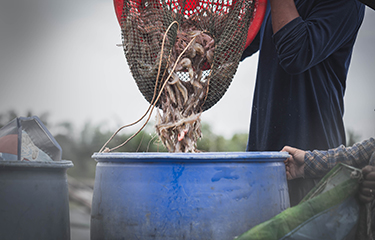The shrimp sector in India has gradually been recovering from the COVID-19 pandemic, with more workers returning to processing factories, but impacts to production and exports will be severe this year, traders told SeafoodSource recently.
A shrimp trader in Gujarat told SeafoodSource last week that the workforce at processing factories in his area is about 40 percent compared to periods before the coronavirus outbreak, as many workers have not been able to return from their homes.
Millions of workers in India were stranded in large cities following the lockdowns imposed by the government from late March onward. Many chose to walk home and have not been back to work, even though restrictions on the fisheries sector were lifted since early April, the trader said.
Another trader with knowledge of the situation in various states said the workforce issue at factories has been improving since early May.
In Andhra Pradesh, there was a severe shortage of workers from 24 March until the end of April, with available labor meeting just 25 percent of demand onaverage. But beginning in May, the workforce grew to around 30 percent in areas at high risk of exposure to the coronavirus, and up to 60 percent in other areas with lower risk.
In Orissa, shrimp factories could meet about half of their workforce demand in May, while in Gujarat, the number was 30 percent.
In Bengal, even though the workforce could fulfill around 60 percent of the need from the factories in May, there remained a severe shortage of peeling workers, the second trader said.
The shortage of workers at the processing plants has made it difficult for exporters to fulfill their contracts. For example, in May, processors in Andhra Pradesh received massive orders from China – for headless shell on or HLSO – and from the United States for retail purposes. But due to low processing capacity in March and April, they had to postpone or delay several cargoes in May.
With regard to harvesting, Indian farmers made “panic harvesting” in March and April, driving down material prices. But in May, prices have improved, according to the second trader.
In Bengal, production this year is likely to be reduced by 40 to 50 percent compared to last year, as farmers have sharply slashed new seeding since the lockdown order in March.
Farmers in Orissa began seeding from February until the middle of March, and harvesting activities will take place in June and July. But as they were also hesitant to seed from March to early May, there will be shortage of shrimp material in the state from the middle of August to September.
The supply of material in Andhra Pradesh will be low in July and August, too, as new seeding was limited in March and April, the second trader said.
Photo courtesy of nirapai boonpheng/Shutterstock







